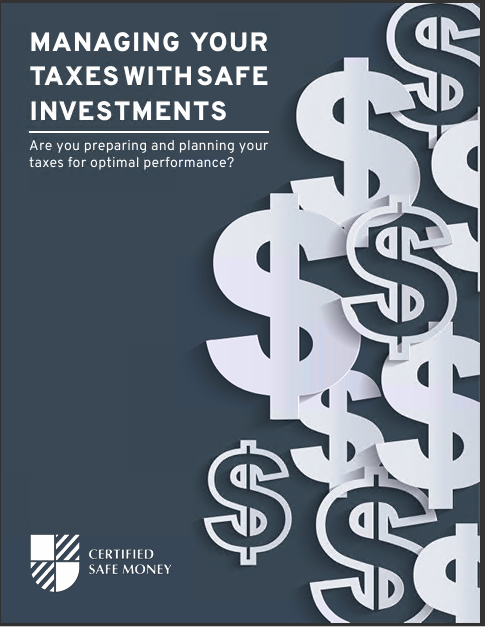A fixed indexed annuity is a form of insurance that can ensure a steady income during retirement. The growth or decline of a stock market index can have a positive or negative effect on the payouts from a fixed indexed annuity. Although you might not be as concerned about losing money as you would be if you bought stocks, your potential profits might be lower. How do Fixed Indexed Annuities Work? Payments from a fixed indexed annuity are guaranteed for life and are tied to the performance of a stock market index. By replicating the movement of market indices like the S&P 500, Nasdaq Composite, or the Russell 2000, fixed indexed annuities provide some benefits of investing in index funds. Fixed indexed annuities, in contrast to index funds, typically offer protection against a reduction in principal value. However, there is a cost associated with loss prevention. As a result, your return will fall short of a market index. The annuity will instead limit both your potential gains and losses. Therefore, an indexed annuity is safer than an index fund, though it may have higher fees. Investment Strategies for a Fixed Indexed Annuity You must buy an annuity contract before setting up a fixed indexed annuity. Your contributions can be made in a single lump sum, spread out over time, or transferred from a retirement plan. The annuity provider will invest the funds following your instructions. You can invest in a single index or spread your money among several. The performance of the market indexes you select determines your returns. You can probably set a cap on your annual gains and losses with a fixed indexed annuity. A few examples of elements that are often used to cap profits or losses are:
- Loss floor. Even in a down-market year, a fixed indexed annuity could help you keep your losses to a minimum. It’s typical for the floor to be 0%, so in a downturn, you break even in the best-case scenario.
- Minimum return. Despite fluctuations in the market index, you may receive some income from a fixed indexed annuity.
- Adjusted value. An adjusted value method may be used to safeguard your fixed indexed annuity against financial decline. Your annuity’s guaranteed minimum value will be recalculated regularly to reflect the returns you’ve already received. Thus, you are prevented from declining below the predetermined level.
- Return cap: Your annuity provider may also cap your growth. An example clause could state that even if the index return is 5%, your balance will grow by no more than 5% even in a good year.
- Participation rate: The participation rate set by your annuity provider could cap your earnings. The term “participation rate” refers to the proportion of your portfolio that can earn returns from the market. If the participation rate is 50%, you will get 50% of the returns from the index. A 4% increase in your balance is possible if the market index return is 8%.
- The cost of using a spread, margin, or asset as collateral. Your annuity provider may take a spread, margin, or asset fee out of your annual return. Only 5% of your money would grow if you earned 8% but paid their 3% in fees.
A fixed indexed annuity policy may include one or more options. Examine a contract thoroughly to determine how your potential gains and losses are capped. Withdrawals from a Fixed Indexed Annuity If you have a balance in a fixed indexed annuity and want to start drawing income from it later, you can do so. The length of time you receive these payments can vary, from a set number of years (say, 20) or the rest of your life. Your monthly payment amount is determined by your account balance, your investment return, and the length of time you choose to receive payments. Another option is to take everything out at once, known as a “lump sum withdrawal,” though this has drawbacks. Most annuity contracts have a surrender period that lasts for five to seven years after the initial purchase. This fee is typically around 7% of your withdrawal but may decrease the longer you keep an annuity and may be charged by the annuity company if you take a lump sum withdrawal. As fixed indexed annuities are typically long-term contracts, consider the surrender period before signing up. If you take money out of your retirement account before age 59½, the IRS may charge you a 10% penalty. Choosing Between a Fixed Indexed Annuity and an Indexed Annuity The terms “indexed annuity” and “fixed indexed annuity” refer to the same financial product. At certain times, fixed indexed annuities are referred to as equity-indexed annuities. Companies selling annuities have a plethora of monikers for the same thing; it all comes down to marketing and customer preference. You can rest assured that any reference to a “fixed indexed annuity,” “indexed annuity,” or “equity-indexed annuity” means the same thing: a contract whose gains and losses are capped according to changes in a specified market index. Costs of a Fixed Indexed Annuity There is no up-front cost for fixed indexed annuities. In its place, the annuity provider will take a percentage of your earnings as payment for their services. Possible charges could include the following:
- Refund caps. Based on your contract terms, the annuity company retains a portion of market index returns in years when they are high.
- Mortality expenses. These charges, also known as M&E fees, pay the annuity company’s anticipated expenses related to its future income guarantees. This sum also accounts for the company’s outlay in marketing the contract.
- Surrender fee. If you cash out your fixed indexed annuity early or cancel the contract, you’ll have to pay a surrender charge.
It is important that before making any decision, you should contact your financial adviser.
Contact Information:
Email: hollingsworthcsa@aol.com
Phone: 2564383071














